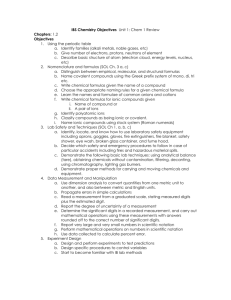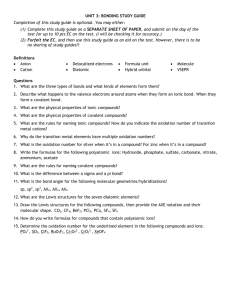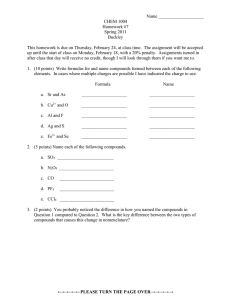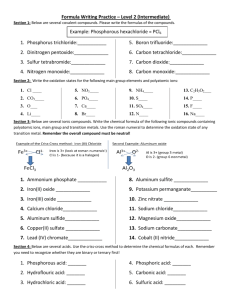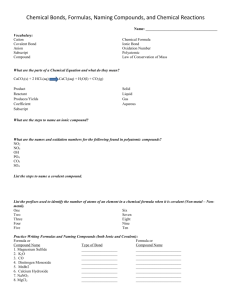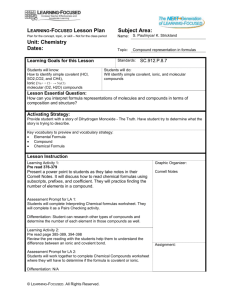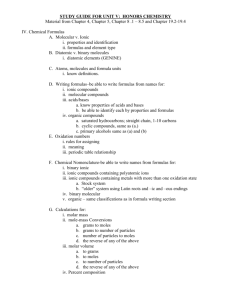CC Unit 8_Mole Refresh_2014
advertisement
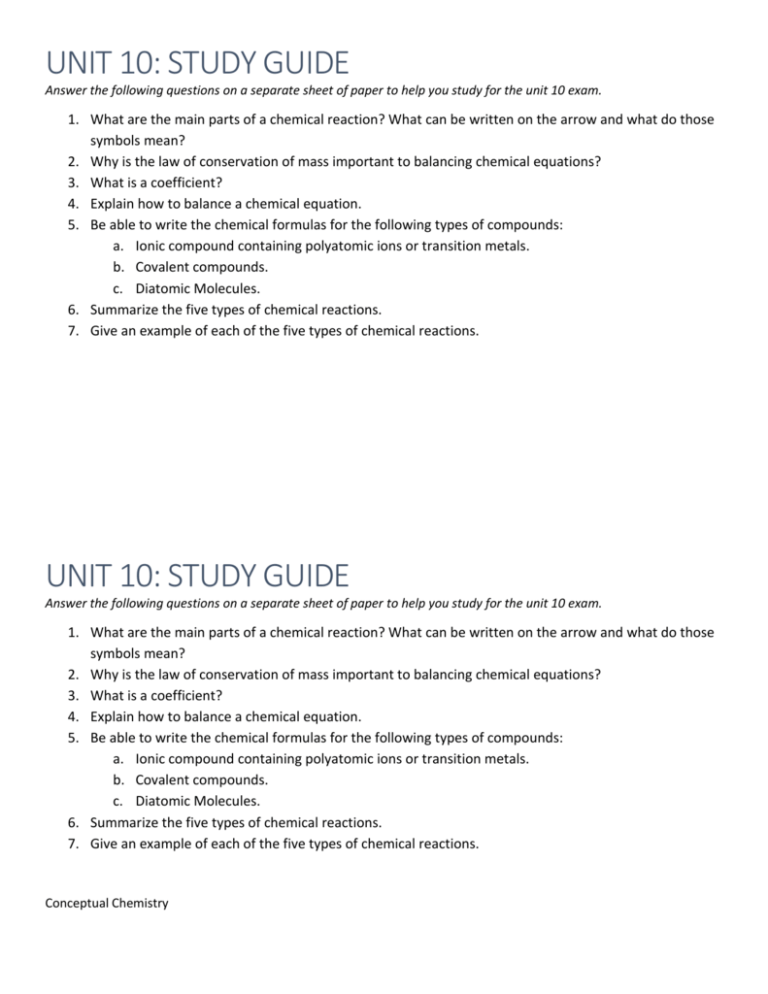
UNIT 10: STUDY GUIDE Answer the following questions on a separate sheet of paper to help you study for the unit 10 exam. 1. What are the main parts of a chemical reaction? What can be written on the arrow and what do those symbols mean? 2. Why is the law of conservation of mass important to balancing chemical equations? 3. What is a coefficient? 4. Explain how to balance a chemical equation. 5. Be able to write the chemical formulas for the following types of compounds: a. Ionic compound containing polyatomic ions or transition metals. b. Covalent compounds. c. Diatomic Molecules. 6. Summarize the five types of chemical reactions. 7. Give an example of each of the five types of chemical reactions. UNIT 10: STUDY GUIDE Answer the following questions on a separate sheet of paper to help you study for the unit 10 exam. 1. What are the main parts of a chemical reaction? What can be written on the arrow and what do those symbols mean? 2. Why is the law of conservation of mass important to balancing chemical equations? 3. What is a coefficient? 4. Explain how to balance a chemical equation. 5. Be able to write the chemical formulas for the following types of compounds: a. Ionic compound containing polyatomic ions or transition metals. b. Covalent compounds. c. Diatomic Molecules. 6. Summarize the five types of chemical reactions. 7. Give an example of each of the five types of chemical reactions. Conceptual Chemistry

